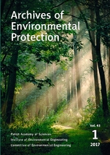
Archives of Environmental Protection
Scope & Guideline
Shaping Sustainable Practices through Rigorous Research
Introduction
Aims and Scopes
- Environmental Contamination and Remediation:
Focus on the study of pollutants, their sources, and the development of methods for their removal or degradation, including heavy metals, pharmaceuticals, plastics, and other emerging contaminants. - Waste Management and Recycling:
Research on effective waste management strategies, including recycling technologies, waste treatment processes, and the environmental impacts of waste disposal methods. - Water Quality and Treatment:
Investigations into water quality assessment, treatment technologies, and methodologies for wastewater management to ensure safe and sustainable water resources. - Air Quality and Pollution Control:
Studies addressing air pollution, its sources, effects on health and the environment, and the development of technologies and policies for air quality improvement. - Sustainable Practices and Technologies:
Exploration of sustainable practices in various sectors, including agriculture, energy production, and urban development, to promote environmental conservation and resource efficiency. - Ecotoxicology and Biodiversity:
Research on the effects of pollutants on ecosystems and biodiversity, including studies on microbial diversity, bioindicators, and ecological risk assessments.
Trending and Emerging
- Microplastics Research:
The prevalence of studies on microplastics indicates a growing concern regarding their environmental impact, with investigations into their sources, distribution, and effects on ecosystems. - Green and Sustainable Chemistry:
Research on green synthesis methods and sustainable practices in chemical processes is on the rise, showcasing an emphasis on environmentally friendly solutions in various applications. - Climate Change Impacts:
Emerging studies addressing the impacts of climate change on environmental quality, water resources, and biodiversity reflect a growing recognition of the need for adaptive management strategies. - Innovative Bioremediation Techniques:
An increase in research focusing on bioremediation technologies, such as the use of microbial communities and biopolymers, signifies a trend towards utilizing biological solutions for pollution mitigation. - Urban Environmental Studies:
There is a notable increase in research related to urban environments, including studies on urban air quality, green infrastructure, and the sustainability of urban ecosystems.
Declining or Waning
- Traditional Wastewater Treatment Methods:
Research on conventional wastewater treatment methods appears to be declining, possibly due to a shift towards innovative and integrated approaches that combine multiple treatment technologies. - Single-Contaminant Studies:
The focus on studies examining the effects of single pollutants in isolation is waning, with more research now emphasizing the interaction and cumulative effects of multiple contaminants. - Static Environmental Monitoring:
There is a noticeable reduction in papers focused solely on static environmental monitoring techniques, as dynamic and real-time monitoring technologies gain prominence in research.
Similar Journals

Asian Journal of Water Environment and Pollution
Pioneering strategies for a pollution-free future.Asian Journal of Water Environment and Pollution is a leading academic journal published by IOS PRESS, dedicated to advancing the field of water science and technology, as well as pollution management. With its ISSN 0972-9860 and E-ISSN 1875-8568, this journal serves as a pivotal platform for researchers, professionals, and academics alike who are keen to explore innovative solutions and interdisciplinary approaches toward water-related challenges and environmental issues. Although currently positioned in the Q4 category for both pollution and water science & technology, the journal aims to foster impactful research and discussions that can enhance the understanding and treatment of water pollution. The Asian Journal of Water Environment and Pollution not only plays a crucial role in disseminating knowledge but also encourages the sharing of findings from unique geographic perspectives, particularly from Asia. As the field evolves, this journal is poised to become a vital resource for those looking to contribute to sustainable water management practices and pollution reduction strategies.
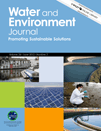
WATER AND ENVIRONMENT JOURNAL
Connecting academia and policy for a cleaner tomorrow.WATER AND ENVIRONMENT JOURNAL is a prominent interdisciplinary journal dedicated to the latest research and advancements in the fields of water resources, environmental engineering, and pollution management. Published by WILEY, the journal has established itself as an essential resource for academics, practitioners, and policymakers since its inception in 1987. With an impressive impact factor reflecting its robust influence, it ranks in the Q2 and Q3 quartiles across multiple categories, including Water Science and Technology, Environmental Engineering, and Management, Monitoring, Policy and Law. The journal welcomes high-quality research articles, reviews, and case studies that address the critical challenges facing water and environmental sciences. As an open access publication, it provides a platform for widespread accessibility and engagement, ensuring that the knowledge generated is disseminated to a diverse audience. With a commitment to advancing understanding and solutions in water-related issues, WATER AND ENVIRONMENT JOURNAL plays a crucial role in shaping the future of environmental research and technology.
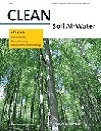
CLEAN-Soil Air Water
Pioneering Discoveries in Pollution and Water ScienceCLEAN-Soil Air Water, an esteemed journal published by Wiley, serves as a vital platform for disseminating research in the fields of environmental chemistry, pollution, and water science and technology. Operating under an Open Access model, it embraces the principles of knowledge sharing, making significant research findings readily accessible to a global audience. With an ISSN of 1863-0650 and an E-ISSN of 1863-0669, the journal has demonstrated its importance in the academic community, reflected in its Scopus rankings within the top quartiles of its categories. Established in 2007 and continuing through to 2024, CLEAN-Soil Air Water offers researchers, professionals, and students an opportunity to explore innovative studies that address pressing environmental challenges, facilitating an exchange of novel ideas and techniques essential for sustainable development. With a publication footprint in Germany and a growing international reputation, this journal is an invaluable resource for those dedicated to advancing the science and practices of environmental stewardship.
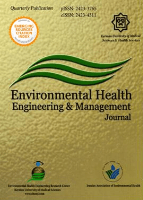
Environmental Health Engineering and Management Journal
Innovating Strategies for Environmental Health ManagementEnvironmental Health Engineering and Management Journal is a premier platform dedicated to the dissemination of research findings in the essential field of environmental health. Published by Kerman University of Medical Sciences in Iran, this Open Access journal has been a beacon of scientific inquiry since its inception in 2014. With an ISSN of 2423-3765 and E-ISSN 2423-4311, it facilitates broad accessibility to cutting-edge research that addresses the complex interactions between environmental factors and human health. With a notable categorization in the Q3 quartile for Environmental Science and Public Health, alongside Q4 in Chemical Health and Safety, the journal underscores its commitment to quality and relevance. Currently ranked #132 out of 233 in Environmental Science within Scopus, it serves as a crucial resource for researchers and practitioners striving to tackle contemporary environmental challenges. The journal's scope includes innovative methodologies, environmental risk assessment, and sustainable health practices, positioning it as an indispensable reference for those invested in improving public health outcomes through environmental engineering and management.

Pollution
Unveiling the complexities of pollution for global change.Pollution is a distinguished open-access journal published by UNIV TEHRAN, dedicated to advancing the understanding of environmental science and the multifaceted aspects of pollution research. Since its establishment in 2015, the journal has been committed to disseminating high-quality, peer-reviewed articles that address the pressing issues of environmental degradation globally. With an impact factor and a Scopus rank that places it within the top tier of Environmental Science (Rank #141/233), Pollution serves as an essential resource for researchers, professionals, and students alike. The journal encompasses a wide range of topics, including the sources, effects, and mitigation strategies related to various forms of pollution, thereby aiming to contribute significantly to the scientific community's efforts in promoting environmental sustainability. Its innovative and timely approach positions Pollution as a vital platform for sharing knowledge and fostering interdisciplinary collaboration in the environmental science domain.
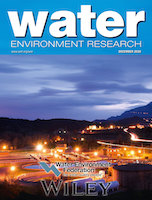
WATER ENVIRONMENT RESEARCH
Championing rigorous research for a sustainable water world.WATER ENVIRONMENT RESEARCH is a leading scholarly journal dedicated to disseminating cutting-edge research in the fields of water science and technology. Published by WILEY, this esteemed journal (ISSN: 1061-4303; E-ISSN: 1554-7531) is renowned for its rigorous peer-reviewed articles that explore critical issues related to ecological modeling, environmental chemistry, pollution, and waste management. Established in 1992 and continuing through 2024, WATER ENVIRONMENT RESEARCH has secured a notable position within its category quartiles, ranking in the Q2 tier for several disciplines, including ecological modeling and water science and technology. It is highly regarded in the Scopus database, holding a rank of #53 out of 261 journals in Environmental Science related to Water Science and Technology, positioning it in the 79th percentile. As it continues to bridge research and practice, this journal serves as an essential resource for researchers, professionals, and students striving to advance knowledge and foster sustainable solutions within the water environment sector.

Environment Protection Engineering
Advancing Sustainable Solutions for a Greener TomorrowEnvironment Protection Engineering is a peer-reviewed academic journal published by Technical University of Wroclaw, dedicated to advancing knowledge and research in the fields of environmental engineering and waste management. With a rich publishing history dating back to 1980, the journal encompasses a wide spectrum of topics, from innovative engineering solutions to the effective management of waste, promoting sustainable practices and environmental protection methodologies. Despite its recent classification in the Q4 quartile of both Environmental Engineering and Waste Management and Disposal, the journal serves as a critical platform for researchers, professionals, and students seeking to disseminate their findings and engage with current challenges faced in environmental science. Located in Poland, the journal supports the scholarly community by providing insightful articles that contribute to the discourse surrounding environmental sustainability. Though currently not available as an open-access publication, it remains an essential resource for those aspiring to deepen their understanding of pressing ecological issues and solutions.

Water Research X
Driving ecological insights for effective water management.Water Research X is a prestigious journal published by ELSEVIER, focusing on the dynamic fields of water science and technology, pollution, ecological modeling, and waste management. Since its inception in 2018, this Open Access journal has become a cornerstone resource for researchers and professionals dedicated to advancing our understanding and management of water resources. Based in the United Kingdom, Water Research X holds an impressive ranking within the Scopus metrics, positioned in the Q1 category across multiple relevant disciplines, including Environmental Science, with a notable rank of 10/261 in Water Science and Technology and 3/41 in Ecological Modeling. This reflects its commitment to disseminating high-quality research that informs policy, supports sustainable practices, and fosters innovation in water management.
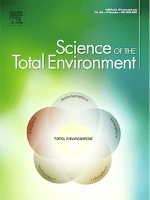
Science of The Total Environment
Exploring the Interconnections of Our EnvironmentScience of The Total Environment, an esteemed journal published by Elsevier, holds a significant position in the field of environmental science, encompassing critical areas such as Environmental Chemistry, Environmental Engineering, Pollution, and Waste Management and Disposal. With an impressive impact factor and ranked in the Q1 quartile across its categories for 2023, the journal is recognized for its high-quality research output and contribution to environmental sustainability. Operating from its base in the Netherlands, the journal has been a valuable resource since its inception in 1972, welcoming innovative studies that address complex environmental challenges. Its notable rankings—such as Rank #9 in both Environmental Sciences and Pollution—underscore its relevance and influence in the academic community. Although the journal currently does not provide an open access option, the robust findings and discussions presented within its pages continue to foster a deeper understanding of environmental issues. Science of The Total Environment is an essential platform for researchers, professionals, and students dedicated to advancing knowledge and solutions in the rapidly evolving field of environmental science.
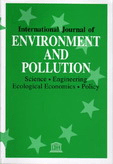
INTERNATIONAL JOURNAL OF ENVIRONMENT AND POLLUTION
Empowering Researchers to Tackle Global Environmental ConcernsInternational Journal of Environment and Pollution is a pivotal publication in the field of environmental science, dedicated to advancing knowledge concerning pollution and its multifaceted impacts on ecosystems and human health. Published by InderScience Enterprises Ltd, this journal, which has been in circulation since 1991, serves as a vital platform for researchers, professionals, and students interested in the management, monitoring, policy, and law associated with environmental issues. With an ISSN of 0957-4352 and E-ISSN 1741-5101, it offers a critical perspective on pollution challenges, emphasizing Waste Management and Disposal. Although placed in the Q4 quartile of its categories, it remains an important resource for understanding the complexities of environmental impact, contributing to policy formulation and ecological research. The journal does not offer Open Access, but it can be accessed through various academic libraries and institutions that value comprehensive studies in environmental management. Engage with the latest findings and discussions that address pressing environmental concerns today!